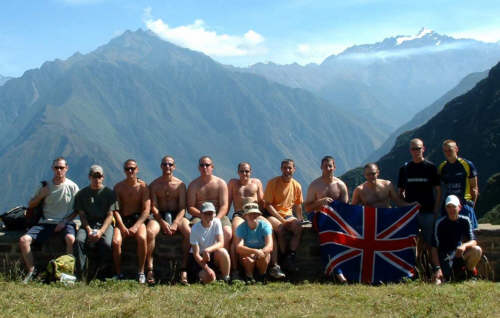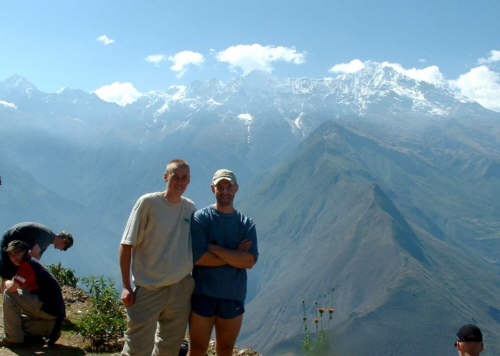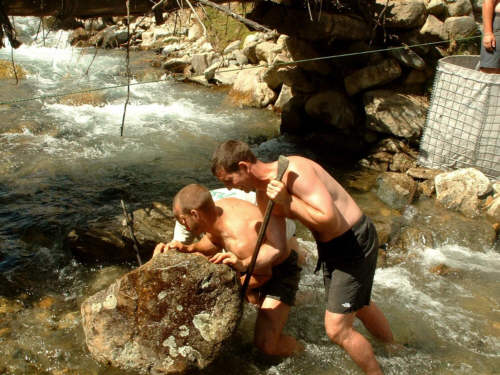Expedition 'Inca Sapper (Tiger)' - July 2003
3 RSME Regiment
 |
In July 03, with sponsorship from
Mabey & Johnson, Alvis Vickers bridging and Hesco Bastion, 14 intrepid
members of 3 RSME Regiment deployed on an expedition to Peru to build a
Non-equipment bridge. The Department For International Development (DFID)
supported the project as it provided assistance to remote areas in Peru.
The 100km high altitude trek took us through remote valleys, up sheer slopes, at times climbing over 2 vertical kilometres a day. The fight for oxygen with every step is something we will never forget! On the fourth day we were the first Europeans to visit a new Inca city – a truly spectacular setting on top of a sheer mountain face. The enormous logistical challenge of locating tools in Peru and transporting equipment to Yanama valley was enormous so the bridge was designed to maximise the utilisation of local materials. Mules were hired to carry Hesco Bastion to the site, while the workforce trekked in over 5 days over remote valleys and high-mountain passes before dropping down to Yanama at 3700m altitude. The Yanama valley is approximately 12-15 kms long and home to just under 2000 people, carving out an existence in the high Andes, southern Peru. The valley’s economy is dominated by subsistence agriculture, income stems from providing horses and mules for trekking companies using the Inca Trail. The area is extremely remote (80 km from Cuzco) and can only be accessed by horse or on foot, involving a 3 day journey over high mountain passes from the nearest road. The river Yanama splits the village and in recent years severe flooding has undermined the existing bridge linking the north and south. The river Yanama is channelled by large boulders at a natural bridging point just 8m wide in the wet season it becomes a raging torrent of white water, 3m deep flowing over 8m/s resulting in the existing banks needing to be bolstered. This was achieved using Hesco Bastion and boulders to protect it from the glacial debris carried by the river. Over 20 tonnes of rocks and boulders were manually repositioned to create and protect the piers. For the decking Eucalyptus trees were selected from the surrounding area felled, then dragged by hand over a kilometre to the bridge. This task took considerable effort, given the lack of oxygen at 3700m altitude. The decking was made from eucalyptus, all cut to shape by hand and bound together with wire, then turfed. The bridge was specifically designed for mules with ramps each side and no ribbons and rails to cater for wide loads. After 5 days work the new bridge was opened and Snr Luis Arteaga Sucso, the mayor of the village, showed his appreciation by presenting an old sheep to the work force, which we had to slaughter; a great honour in Peru. The villagers then cooked the sheep in the traditional way, by heating up rocks, then burying bits of mutton and hot rocks in the ground. The result was slightly raw but tasty mutton, a real treat!
|
 |
|
 |
The climax of the trip was the finish – Macchu Piccu. Words cannot describe its splendour, which was made even more appealing by the prospect of a shower after 18 days in the wild.
Capt TJ Loyd